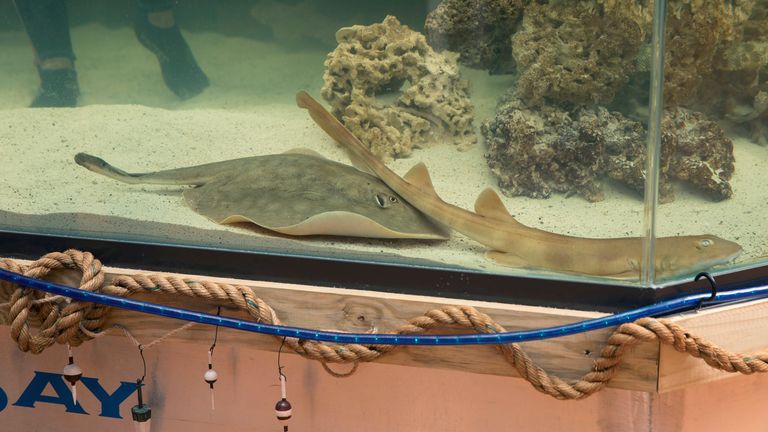A stingray whose “virgin” pregnancy made global headlines has a rare reproductive disease, the aquarium housing her has said.
In an update on the health of Charlotte the stingray, the Aquarium and Shark Lab in North Carolina said she had “developed a rare reproductive disease that has negatively impacted her reproductive system”.
Charlotte captured international attention in February when the aquarium said she was carrying “between three and four pups” despite not encountering a male stingray for eight years.
“It’s a really strange and unique phenomenon,” Brenda Ramer, its executive director, said at the time while livestreaming Charlotte’s ultrasound.
In the update posted on social media on Friday, the team said: “Many are asking the name of the reproductive disease, but it is simply found under that text reproductive disease.
“We are actively searching [for] more information ourselves.”
They added they found studies done on a different species of stingray but none on round rays, Charlotte’s species.
The aquarium closed on Saturday as the team “continue to care for Charlotte, and consult her medical team”.
Shark theory dismissed
Before the discovery of the pregnancy, aquarium staff believed Charlotte had cancer after she began to “swell”.
However, they soon discovered she was expecting.
Thousands of people shared their theories on how the pregnancy had happened, with some saying she had been impregnated by a male shark living in the tank. Experts dismissed this, however.
“The morphology of the male shark won’t necessarily fit with the morphology of the female round stingray,” Benjamin Perlman, from the biological sciences department at California State University, Long Beach, told NBC’s Today.
Ms Ramer told Today she now believes Charlotte became pregnant through parthenogenesis, where a female’s egg becomes fertilised by her own cells.
If this was the case, Charlotte would likely only be able to give birth to females as they would be her clones, according to the aquarium.
‘Not impossible’
In a social media post asking people to stop “discounting” the aquarium’s discovery, Ms Ramer said: “Just because something has not happened or has not been documented does not make it impossible.”
The fish is between 12 and 16 years old and was adopted from a private home outside the city of Charlotte, North Carolina, eight years ago.
Staff at the aquarium realised Charlotte was carrying eggs in December.
“She definitely got much rounder,” Kinsley Boyette, an assistant director of the Aquarium and Shark Lab, told Today.
While humans carry their offspring in their stomachs, stingrays carry theirs in their backs. “We noticed that she couldn’t completely bury herself underneath the sand, and that is what moved us to perform the ultrasound.”
Now, Charlotte’s fans around the world are waiting to get an update on her health after months of speculation.

